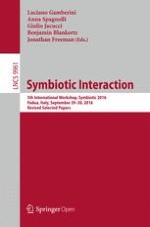1 Introduction
2 Methods
2.1 The Experiment
2.2 Data Acqusition and Preprocessing
2.3 Source Power Co-modulation (SPoC) Analysis
2.4 Level Prediction via Regression
3 Results
3.1 Optimal Frequency Bands
3.2 Number of SPoC Components
3.3 Interpretation of Components
3.4 Level Predictions
Participant | Pearson correlation | Spearman correlation | RMSE (in levels) |
|---|---|---|---|
1 | 0.90 | 0.90 | 0.62 |
2 | 0.81 | 0.81 | 0.78 |
3 | 0.84 | 0.85 | 0.63 |
4 | 0.82 | 0.83 | 0.69 |
5 | 0.82 | 0.85 | 0.75 |
6 | 0.89 | 0.91 | 0.55 |
Mean | 0.85 ± 0.02 | 0.86 ± 0.02 | 0.67 ± 0.04 |
